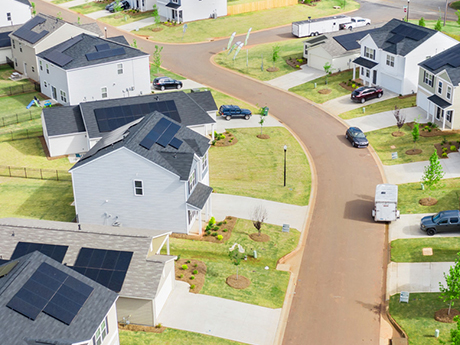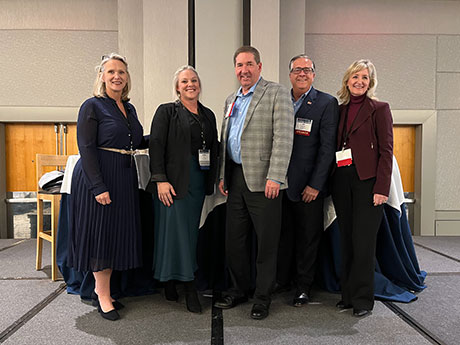The multifamily industry has its hands full: finance in adverse economic conditions, rapidly rising operation costs, as well as the challenge of attracting and keeping quality tenants as the biggest jump in new inventory creates more competition than the industry has seen in decades. Technology is an enabling and defining tool in the midst of these challenges. Tenants often expect services like internet access, telephone, television and Wi-Fi hotspots throughout a complex. Multifamily property staff need data access, speciality software, as well as the ability to schedule prospective resident visits, remote viewing, maintenance and more. Relatively few multifamily operations have the scope, scale and economics for an IT staff that can handle the support and repair requirements necessary to install systems, keep them working, protect data and networks while assisting tenant and staff users, particulary 24 hours a day, 7 days a week. Managed IT services are third-party companies that remotely provide the IT expertise and the help a company requires. “If a resident can’t get on Wi-Fi, if a phone stops working, if there’s an issue with the network or if there’s a problem with the ability to share or store or retrieve data — that’s where we step …
Features
By Michael Brookshier, vice president of development, Keystone The COVID-19 pandemic sent renters flocking to spacious apartments in the suburbs. Now, in this post-pandemic world, just as companies revert to in-office work and homeownership becomes increasingly unattainable, renters are moving back to cities and seeking an urban lifestyle. This re-acceleration to urban centers drives another trend in commercial real estate: converting outdated and vacant office buildings into stylish, amenity-filled residential buildings. To keep up, developers must strategically identify the right building, location and amenities in order to meet renters’ demands. Philadelphia is a perfect example of an 18- to 24-hour city in which a large residential population in the central business district drives foot traffic outside of regular office hours. The Center City area also boasts an attractive downtown landscape of diverse uses such as office, residential, retail, award-winning restaurants and nightlife. Find the Right Building The ideal candidate for a successful office-to-residential conversion in an urban setting is often an office building constructed before World War II. These types of properties feature intricate designs, high-level finishes, ample natural light, outstanding views and beautiful and inviting lobbies that lend historical architectural details that are conducive and appealing to residential living. …
Commercial property conversions can offer significant advantages over conventional ground-up real estate developments. Conversions can provide a head start on construction with established entitlements, existing structures, in-place utilities and entry to choice locations in otherwise built-out submarkets. Consider the Universal Buildings, Post Brothers’ conversion of two 1960s-era office buildings into more than 600 residential units and ground-floor retail just north of the District of Columbia’s Dupont Circle. The 15-story complex will feature a two-level, glass-walled fitness and recovery center with more than 10,000 square feet of training zones, equipment and classrooms. The developer is housing the fitness center and other amenities in a new atrium that replaces the upper levels of structured parking originally built within one of the former office buildings. “The location is incredible — there is probably no greater location in any major city in the country for conversion,” says Josh Guelbart, Post Brothers’ Co-Chief Operating Officer. “Having the entire block means we have light, air and hilltop views of Kalorama, Adams Morgan and Dupont Circle, three of the finest residential neighborhoods in the District. There isn’t room for new buildings of scale in those neighborhoods, and that really made this existing, large building attractive to us.” …
— By Carina Mills and Maura Schafer — In 2017, partner design firms RDC and Studio One Eleven (RDC-S111) relocated from a high-rise office to a former 25,000-square-foot Nordstrom Rack at 245 E. Third Street in downtown Long Beach, Calif. The store was located in a 1980s-era shopping center that had fallen into serious decline. On the plus side, the location was consistent with Studio One Eleven’s mission of urban repair, allowing for a pedestrian-level interaction with the neighborhood, while strengthening the city fabric. Soon enough, the retail space was converted into a modern creative office that added 130 design professionals to the neighborhood’s daytime population. This higher-use conversion occurred alongside other public and private investments that brought restaurants into the area. These included Ammatoli (a Los Angeles Times Top 100 restaurant), Beachwood Brewery, Rainbow Juices and Michael’s Pizzeria, among others. The adjacent Harvey Milk Park garnered grants for a reinvigoration by Studio One Eleven, and developers started working on housing development around the immediate neighborhood. This move and project was not only a chance for RDC and Studio One Eleven to create urban impact, but to design an environment for staff that instills creativity, collaboration and wellness. The office achieved …
The term “adaptive reuse” in real estate circles typically conjures images of repurposing old, obsolete commercial buildings. Meanwhile, academic buildings, administrative offices and other properties on college campuses rarely come to mind. But NAI has noted a growing need among higher learning institutions with vacant or underused assets, particularly as a result of growing online learning options, says Larry Gautier, senior vice president of NAI Miami | Fort Lauderdale. As a result, the brokerage is focused on finding solutions for schools. “NAI hasn’t historically been involved with higher institutions of learning — we’ve typically focused on conventional real estate transactions,” Gautier acknowledges. “But a few years ago, when students weren’t going in to class, colleges and universities were facing a challenge: what do you do with facilities — that were built for thousands of students — in a remote-learning setting? For many schools, remote learning is here to stay.” Options include leasing buildings to commercial users or entering a joint venture with, for example, an aerospace or engineering company for educational programs, he adds. Colleges that suddenly have vast unused parking lots could also enter into long-term leases with multifamily, office or mixed-use developers. “Our position is to help these schools create …
By Eric Voyles, executive vice president and chief economic development officer, TexAmericas Center Pandemic-era supply chain challenges are improving, but obstacles still abound. From an uncertain economic climate to labor constraints, industrial companies are increasingly looking for streamlined and cost-effective solutions to minimize risk while encouraging growth. How can they make these business goals reality? One solution is to partner with third-party logistics (3PL) providers to strategically outsource efforts to keep business growing and thriving. For companies looking to grow and expand, knowing when to outsource 3PL services can lead to more efficient management of assets. Further, engaging in a 3PL partnership provides many perks to help businesses better manage risks associated with labor, warehousing and inventory management, allowing companies to test new markets more confidently. Additionally, companies that are ready to expand to new areas to accommodate growth can consider commercial real estate spaces that offer 3PL services — as well as other considerations to keep in mind when prospecting sites. When to Consider Outsourcing 3PL Services Although supply chain disruptions have improved since the height of the pandemic, challenges like factory shutdowns, snarled shipping routes, extreme weather and labor shortages remain. Economic issues like inflation, which impacts cost …
It would be impossible to write a development or design article without mentioning the elephant in the room — the state of the capital markets and the current hurdles in securing financing of any sort, but especially for new development projects. While demand for new communities exists in many markets, getting projects to pencil out is the tricky part. For those developments that can move forward, innovative architecture and design are being employed to make the projects as functional and efficient as possible. Out are some of the flashier amenities from the days of yore, and in is design that helps student residents be the happiest and healthiest versions of themselves, both mentally and physically. From the developer perspective, there is no question about the desire to build — especially in Power Five university markets. “Almost all of the Power Five universities have seen 7 percent to 10 percent rental rate increases over the past three years and are showing approximately 98 percent occupancy at most properties,” says Greg Faulkner, president of Humphreys & Partners Architects. “But math has to work with the rates, like equity requirements of 45 percent or higher. Hard costs have moderated, but some are still …
By Richard Ross, CEO of Quinn Residences Climate change is an enormous topic with implications so expansive that it can be difficult to understand how — or even if — we can make a positive impact. While companies and individuals can make essential changes on the margins, like advocating for public policies that promote better climate outcomes, there is one place where everyone can make a distinct difference: at home. The built environment is one of the most significant contributors to climate change, and our residences account for much of our carbon footprint. Changing how we build and what we buy or rent can alter this dynamic, and for new builds, this process starts on day one. Here are five ways in which developers, builders, buyers and renters can make that possible. Implement a Solar Program Rooftop solar panel adoption is soaring, setting installation records for six consecutive years. More than 700,000 homeowners installed solar panels in 2022, and over half of U.S. adults say they “want to power their home with solar panels in the future.” Meanwhile, the costs of installing and maintaining solar panels have never been lower, thanks to cheaper material costs, streamlined permitting processes and workforce …
ATLANTA — Shortened attention spans and the desire for instant gratification are a couple of the changing consumer behaviors that impact the multifamily operations industry. Karen Key, a president with Houston-based Asset Living, said that 75 percent of consumers expect a response time in less than 24 hours from a business. Twenty percent expect a response time within minutes. “If you’re missing that mark and someone else is responding to them, whether it’s a client, prospect or resident, you’ve lost them. They’re gone.” Key’s remarks came during the operations panel at the 2023 InterFace Multifamily Southeast conference, which took place Thursday, Nov. 30 in Atlanta. France Media and Southeast Real Estate Business hosted the event at the Westin Buckhead hotel. Ed Wolff, president of California-based LeaseLock, moderated the panel, which was entitled “What’s Changed and What’s Not Changed in Terms of Occupancy, Rental Rates and Operations?” Key emphasized that many of these changes resulted from the COVID-19 pandemic. “When the pandemic happened, everyone got spoiled in terms of having everything at their fingertips. They were tied to a computer all day every day,” she said. As such, Asset Living’s use of social media as an advertising tool increased significantly ever …
The spike in interest rates and the consequent disruption throughout real estate capital markets over the last 18 months is generating newfound interest in commercial property assessed clean energy (C-PACE) financing. The program, which emerged more than a decade ago, pays for building upgrades to improve energy and water efficiency as well as seismic resilience in new construction and rehabs. In cases where cost overruns, stabilization delays and declining values threaten the ability to refinance construction loans, developers are tapping C-PACE retroactively for a much-needed slug of so-called “rescue capital,” says Rafi Golberstein, CEO of the PACE Loan Group, a direct lender of C-PACE based in Minneapolis, Minn. Typically, developers are using the proceeds to pay down debt and fund reserves to secure loan extensions or modifications. “We are seeing a ton of opportunities right now in deals that were built over the past three years, and C-PACE can provide a liquidity infusion to get many folks through a maturity logjam,” he declares. “When confronted with other options, they’re going to prefer C-PACE all day long.” Cost-Effective Debt Indeed, the cost of those other options, such as mezzanine financing or preferred equity, can be upwards of 500 basis points higher …











